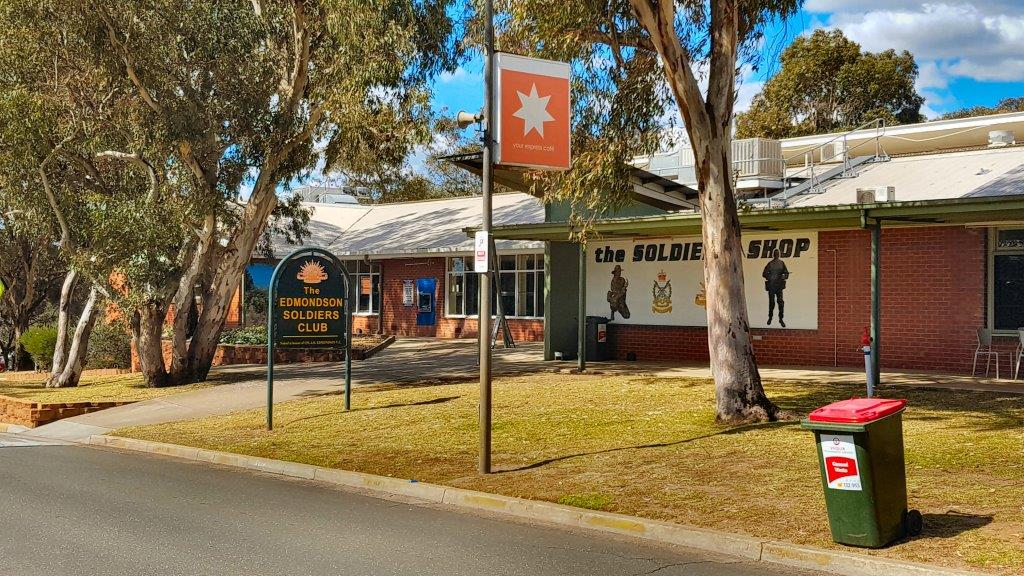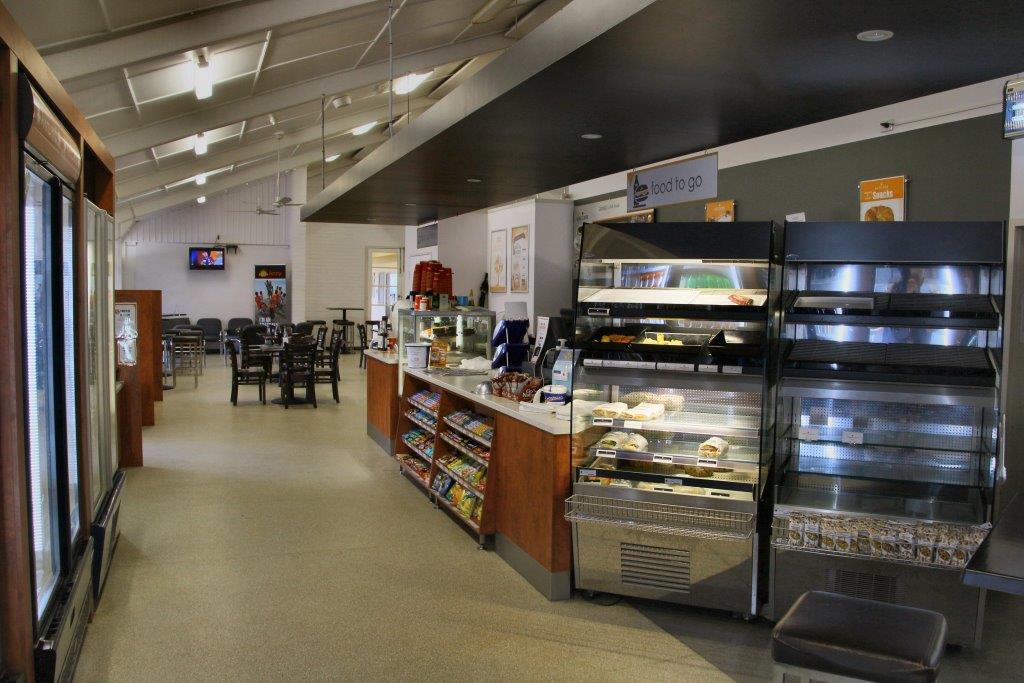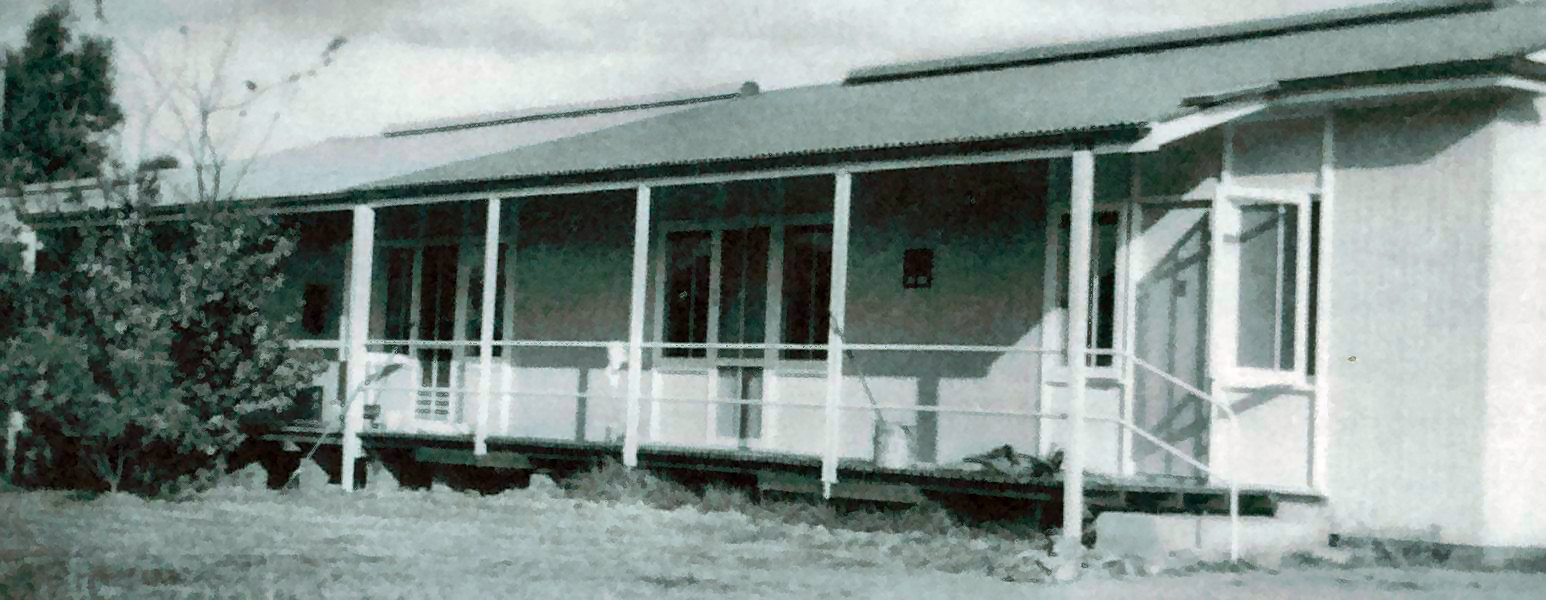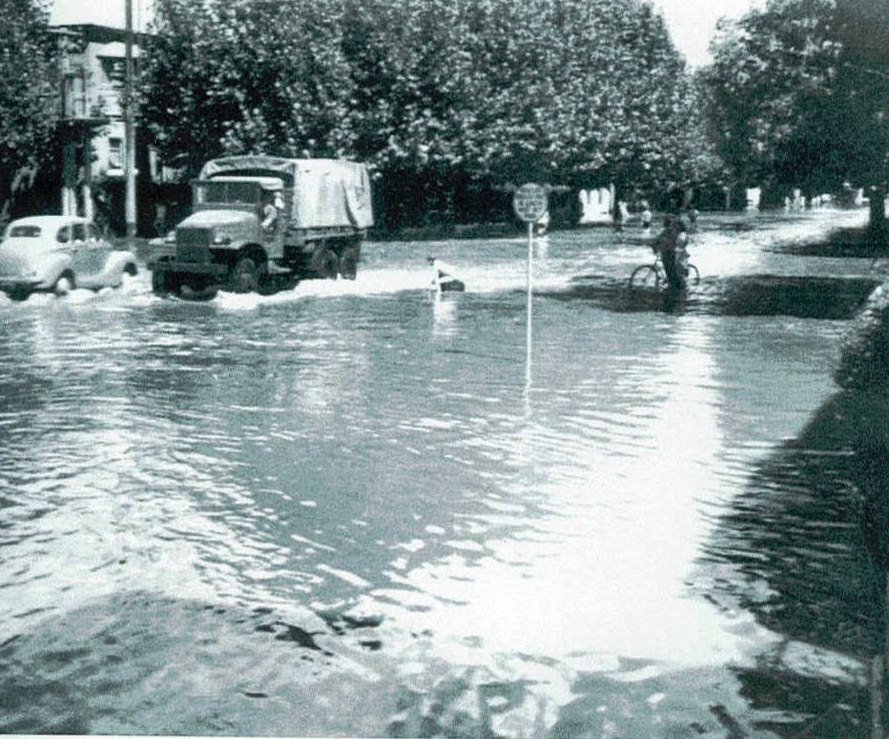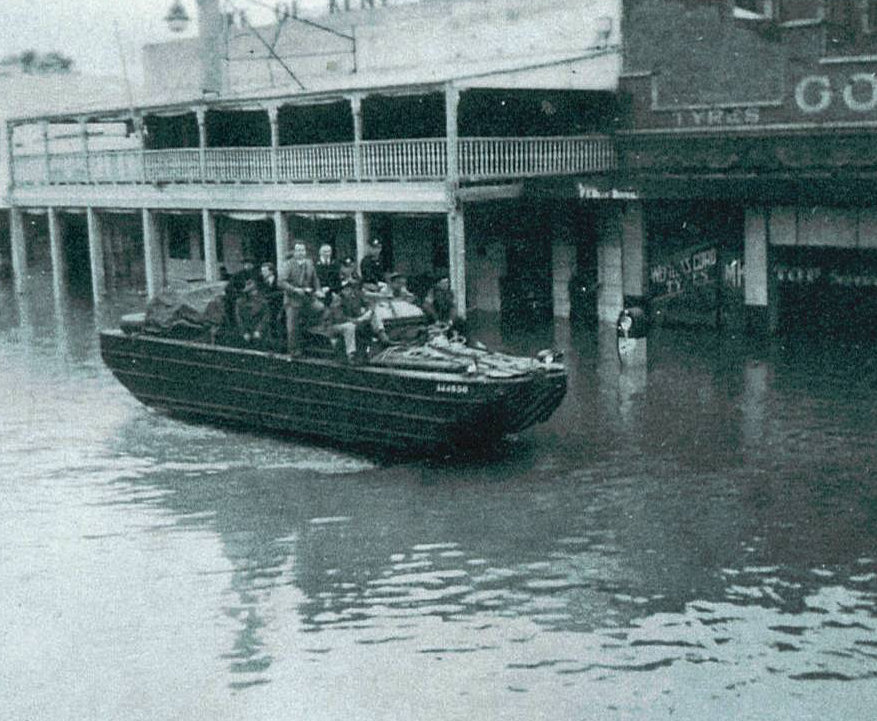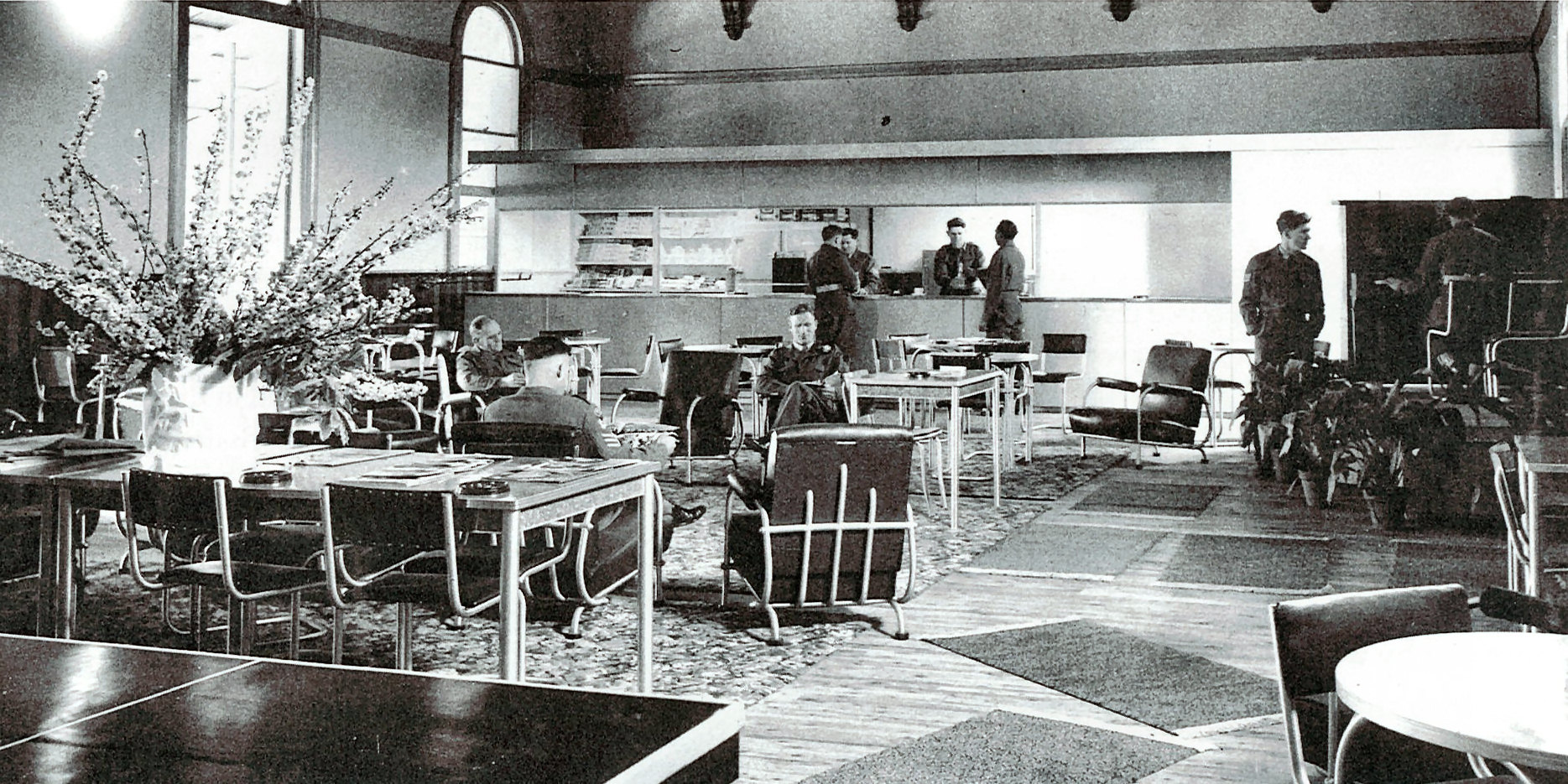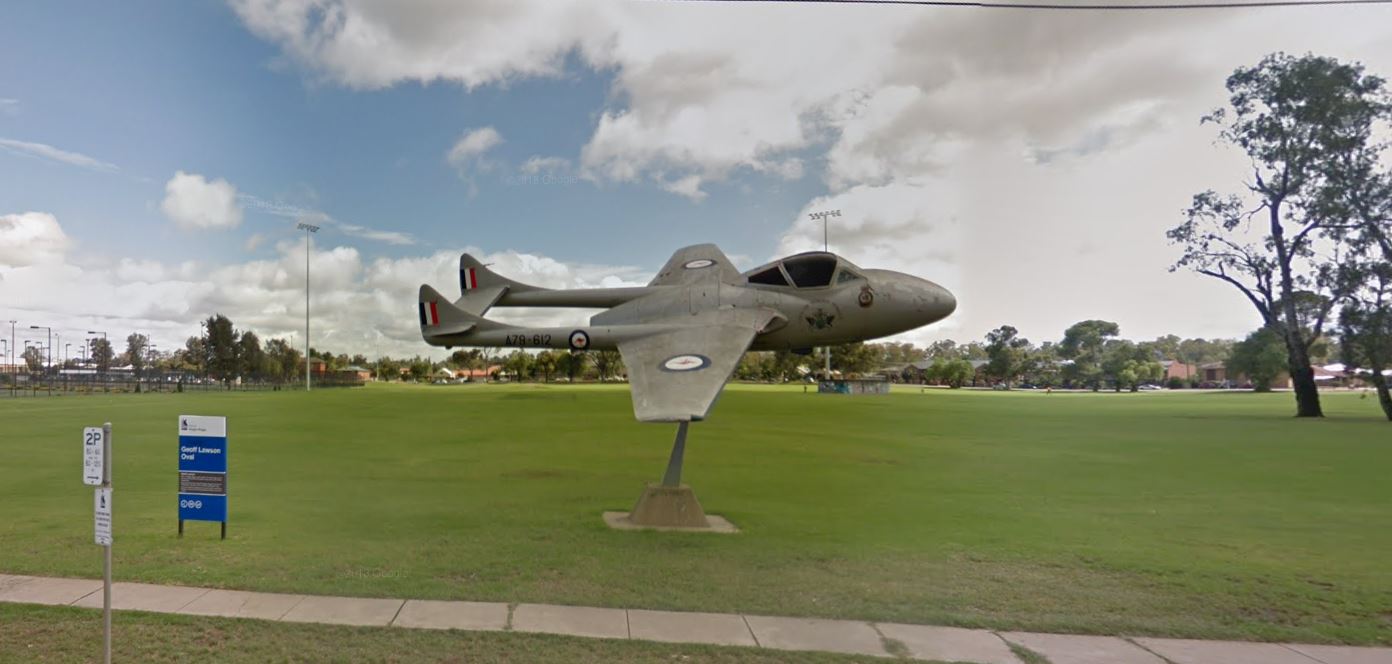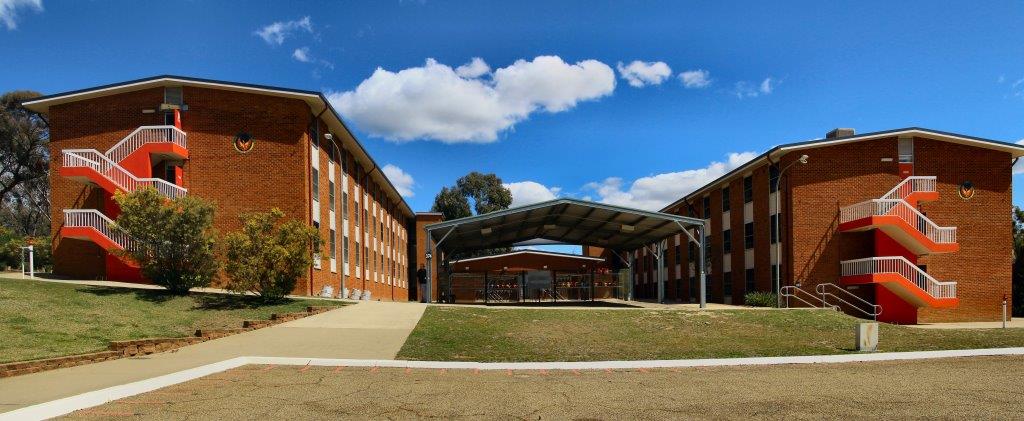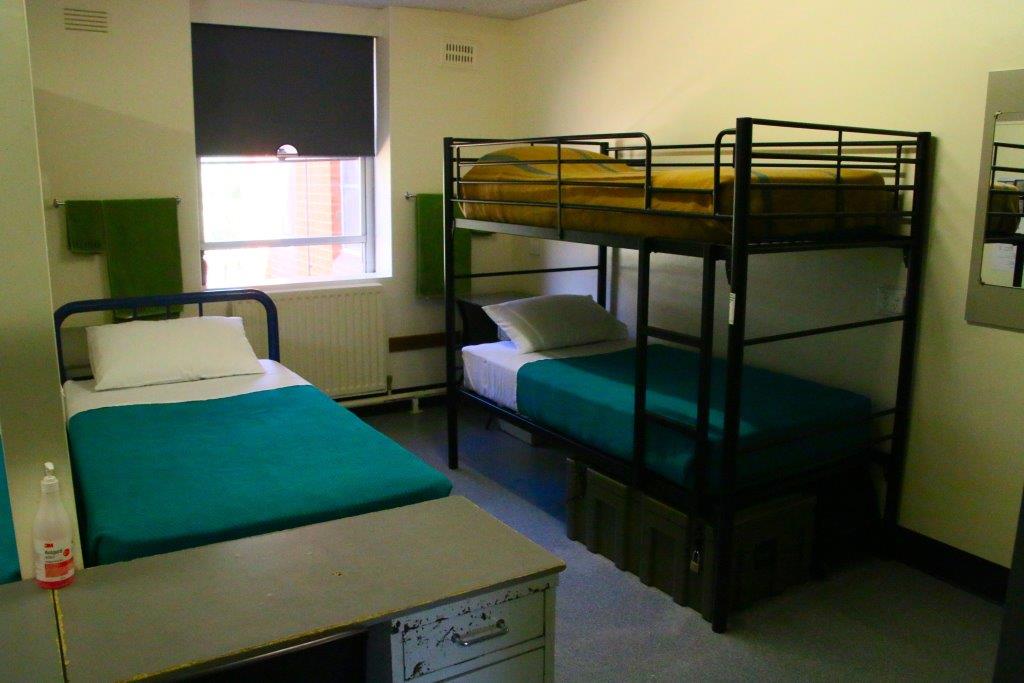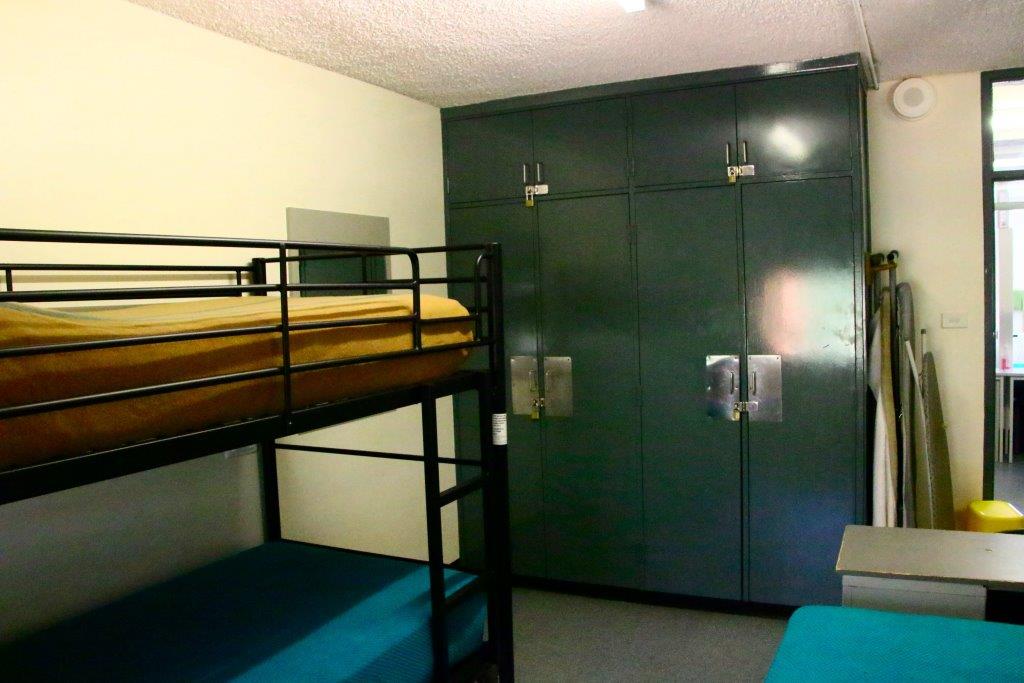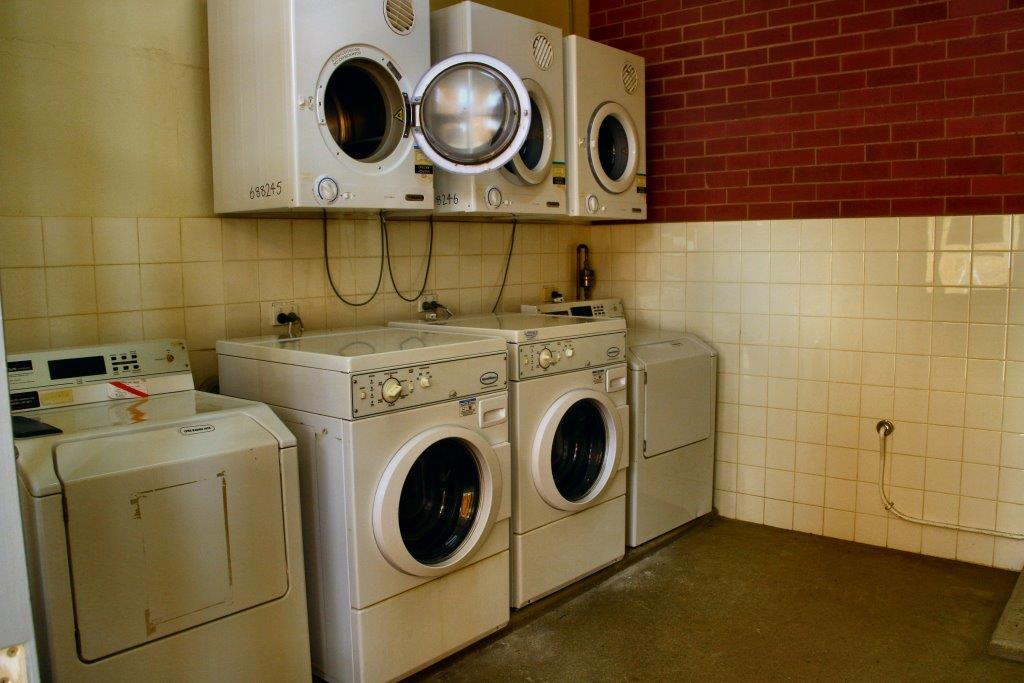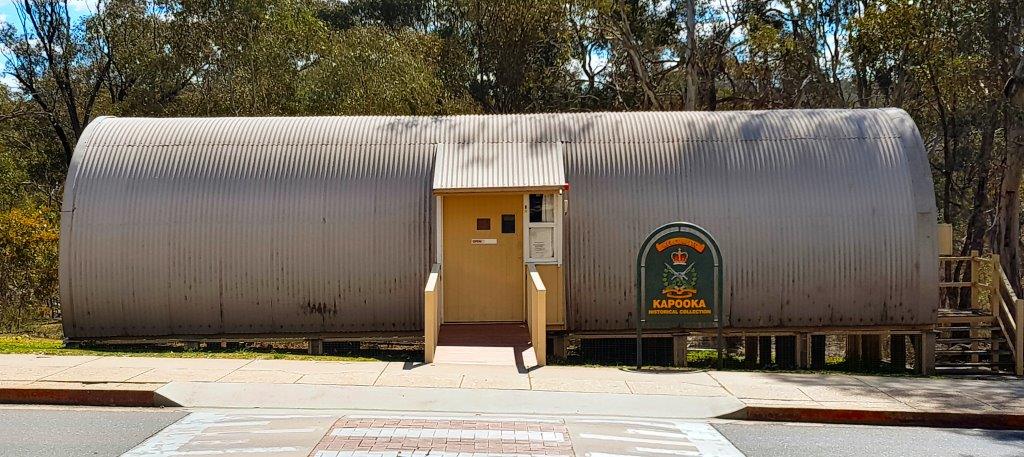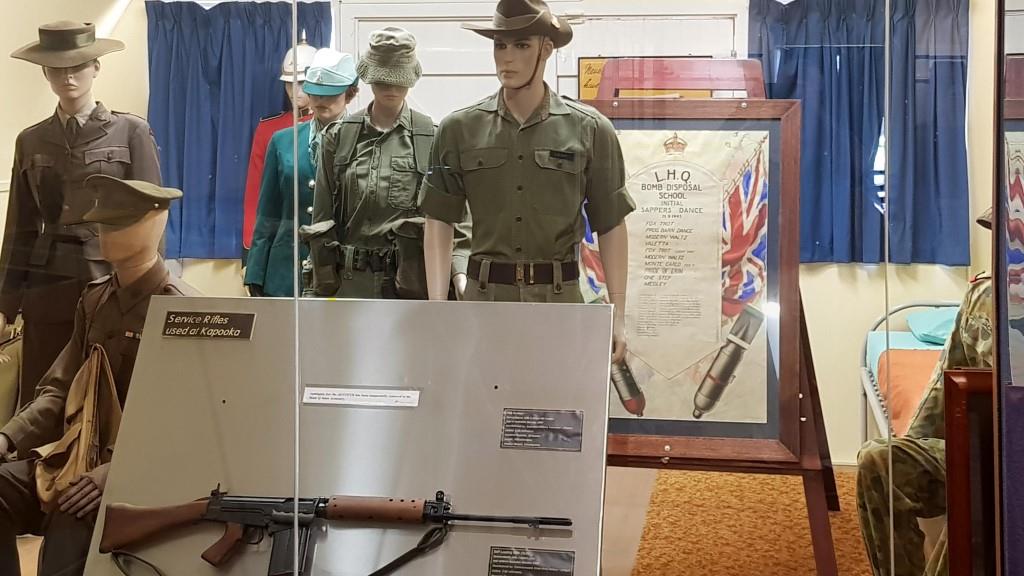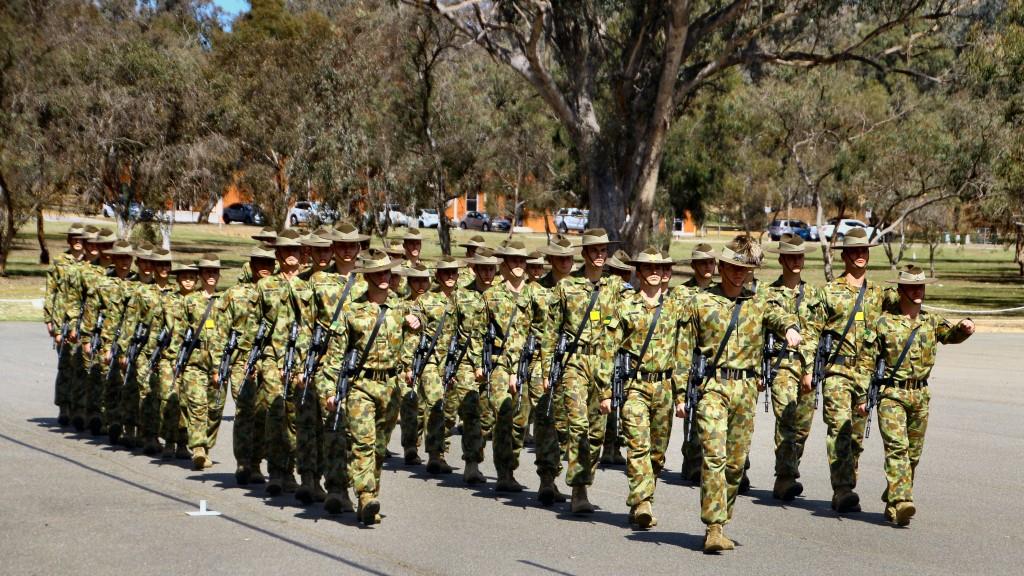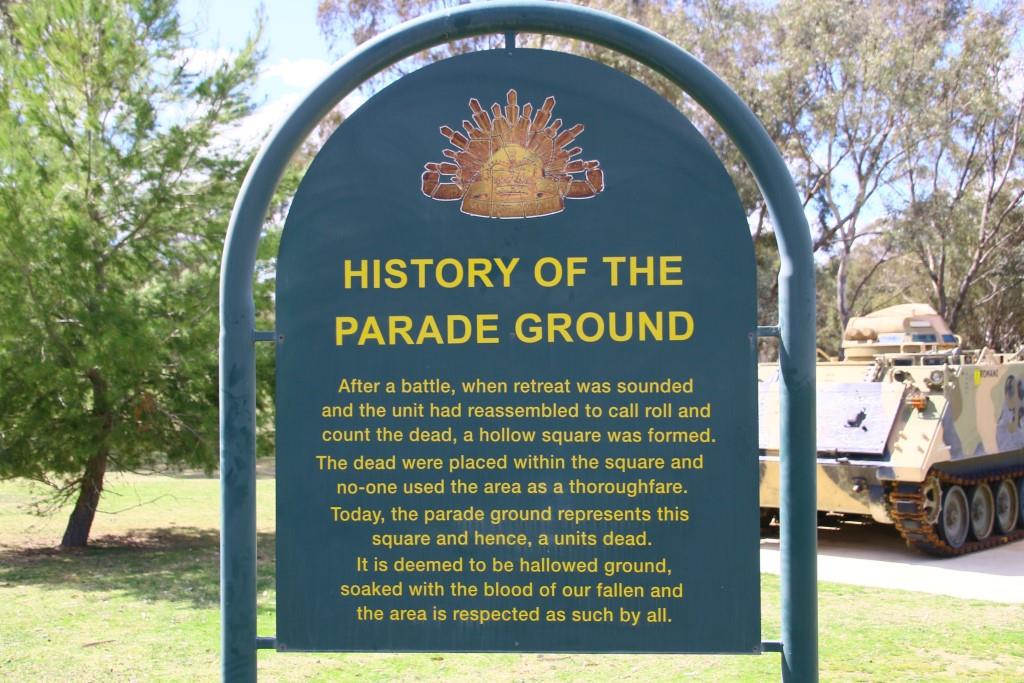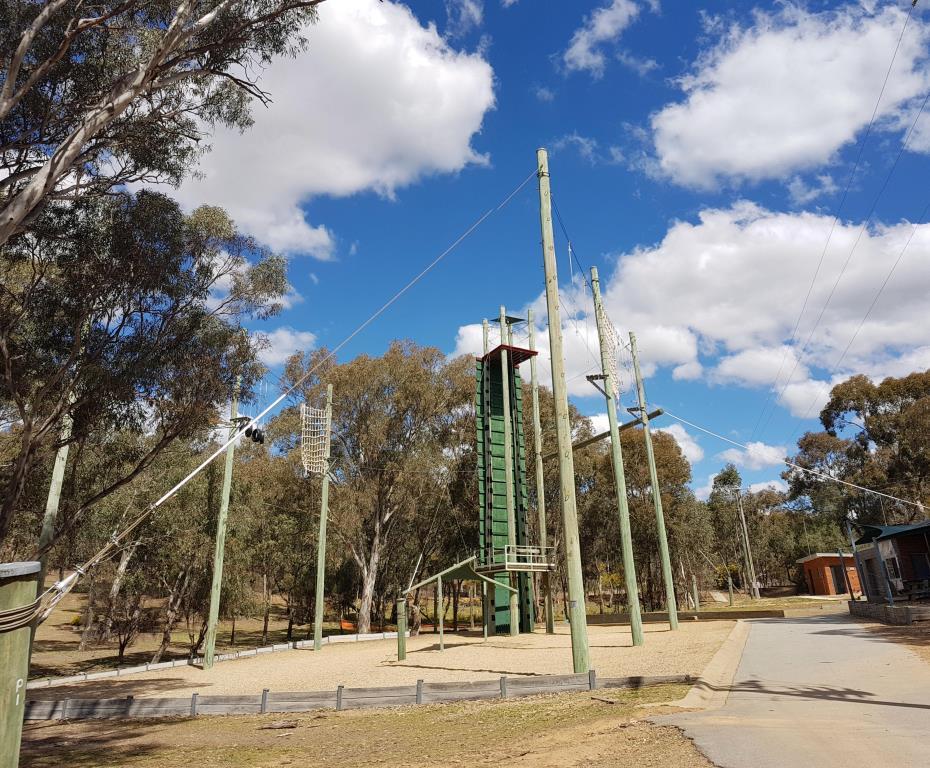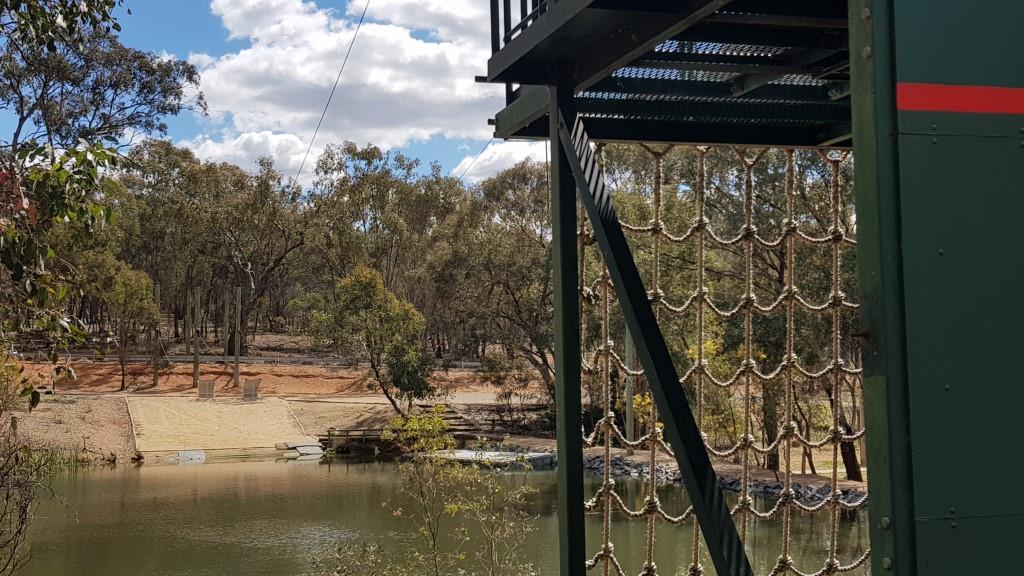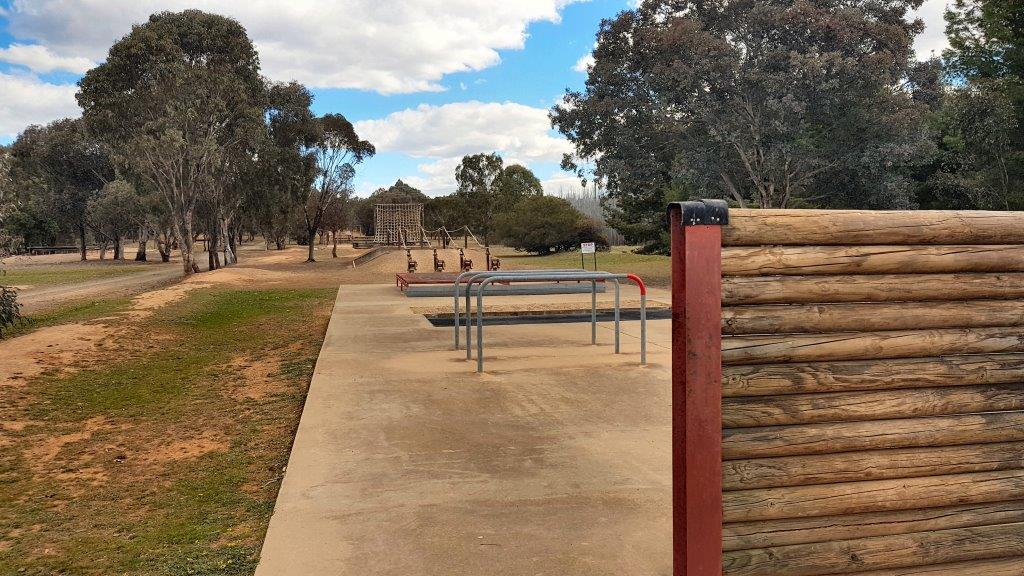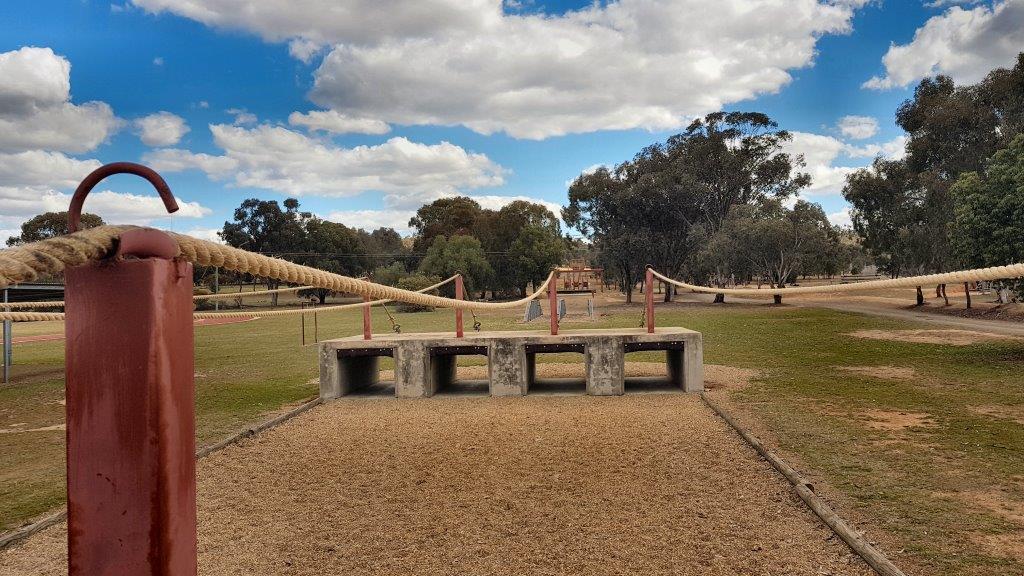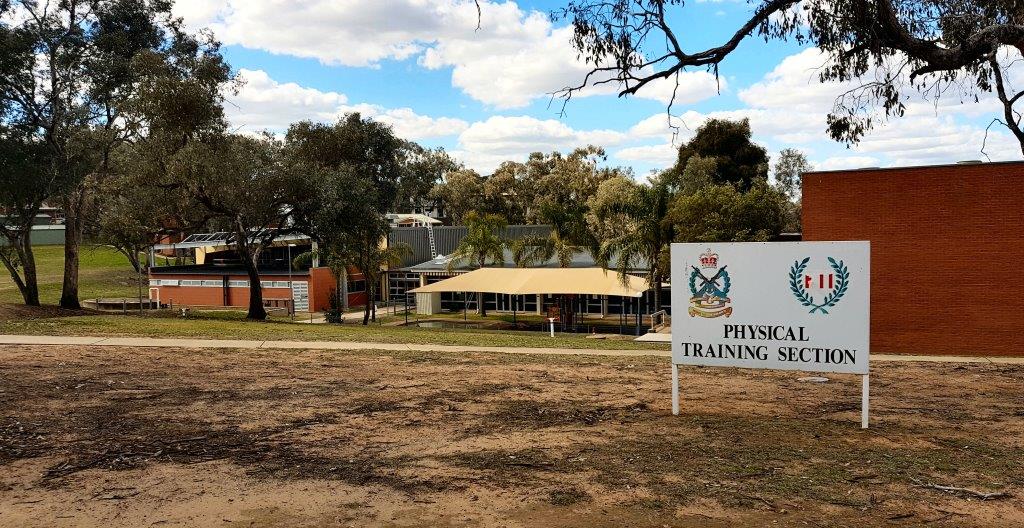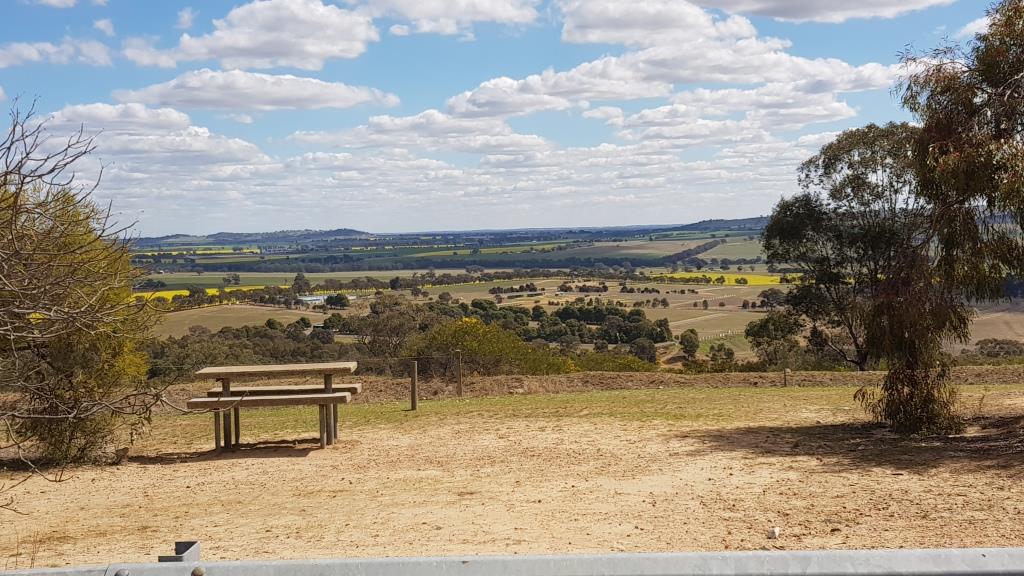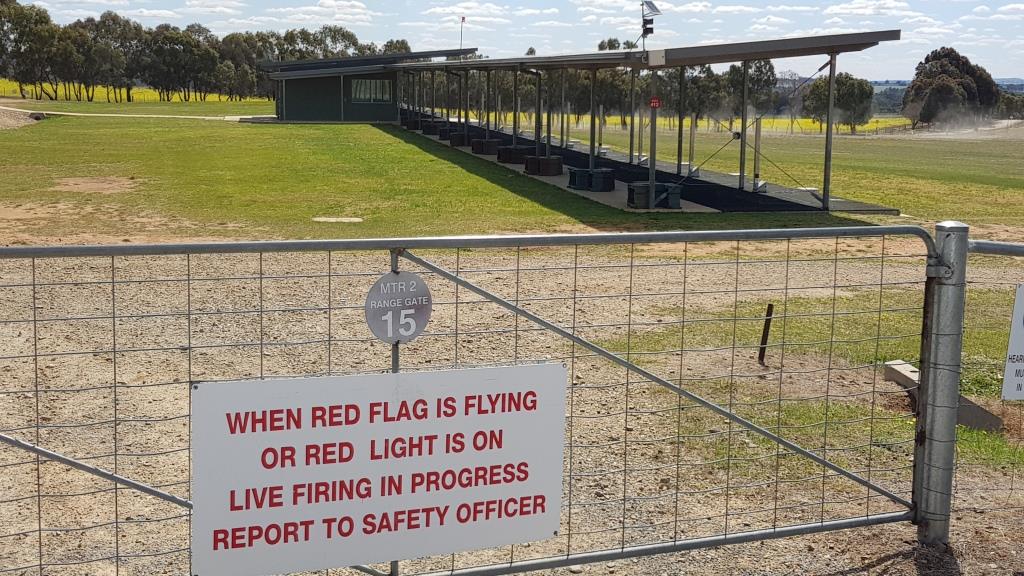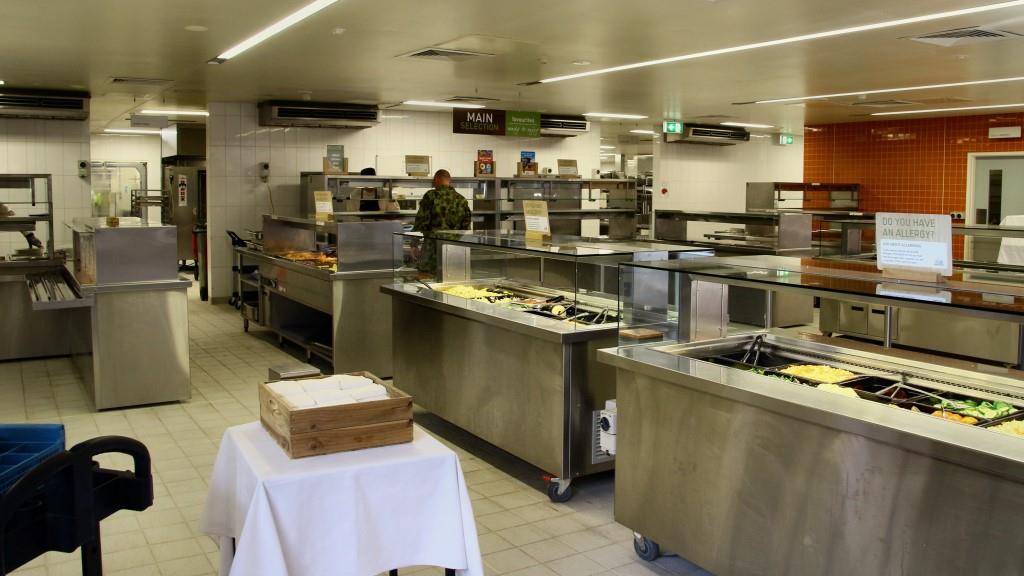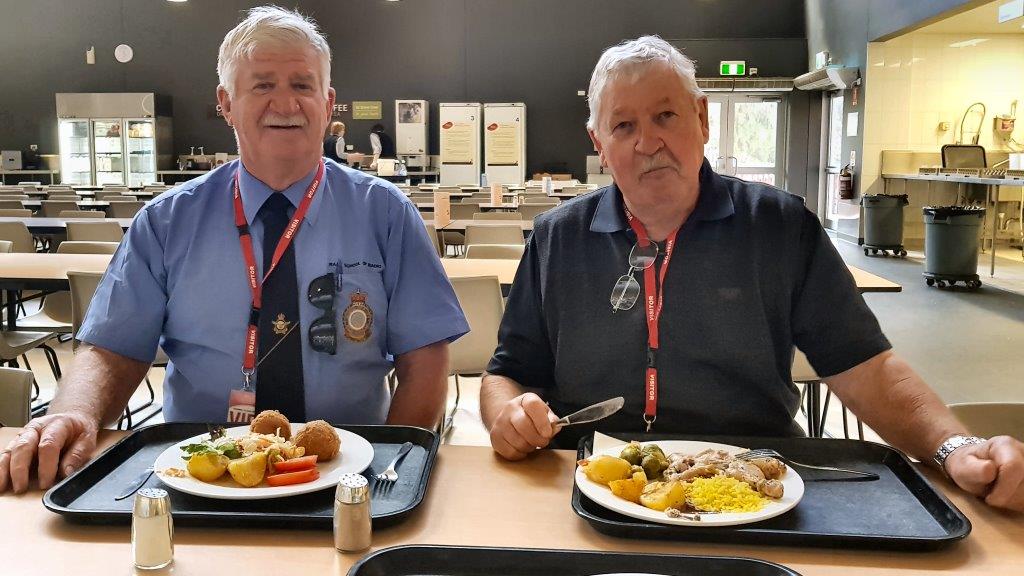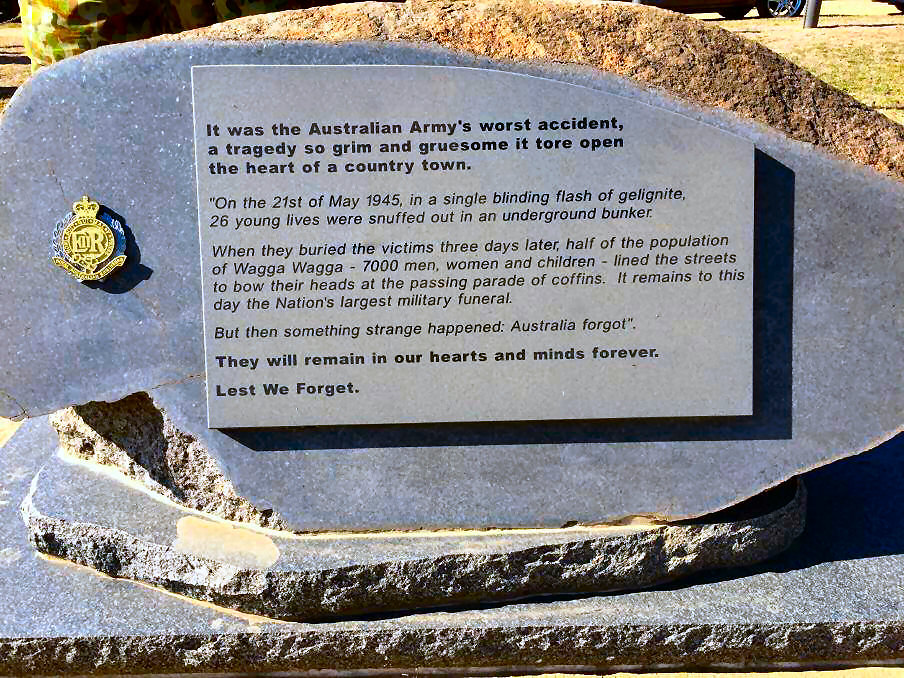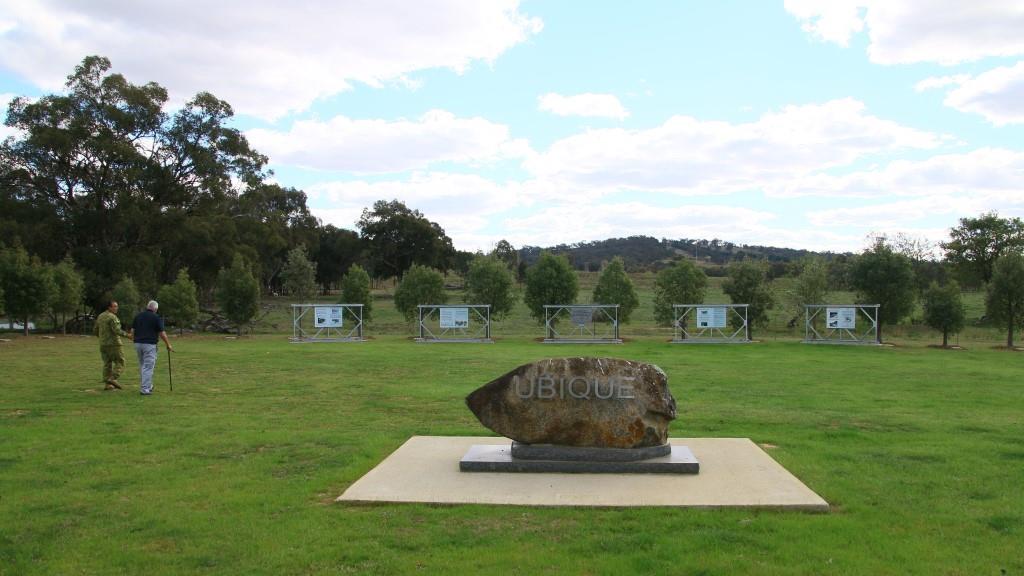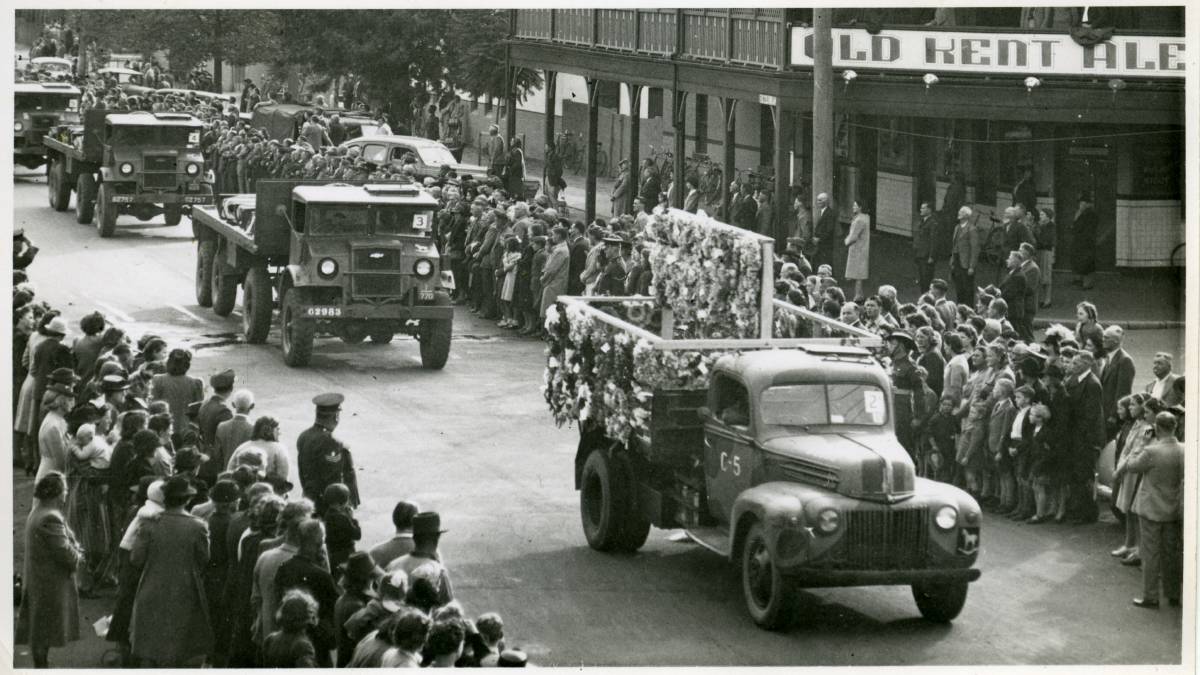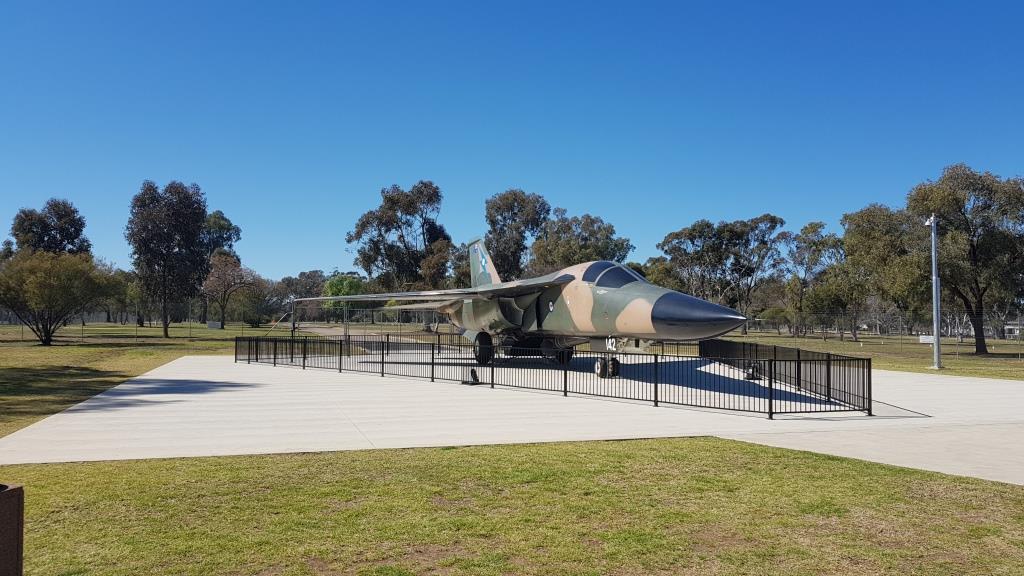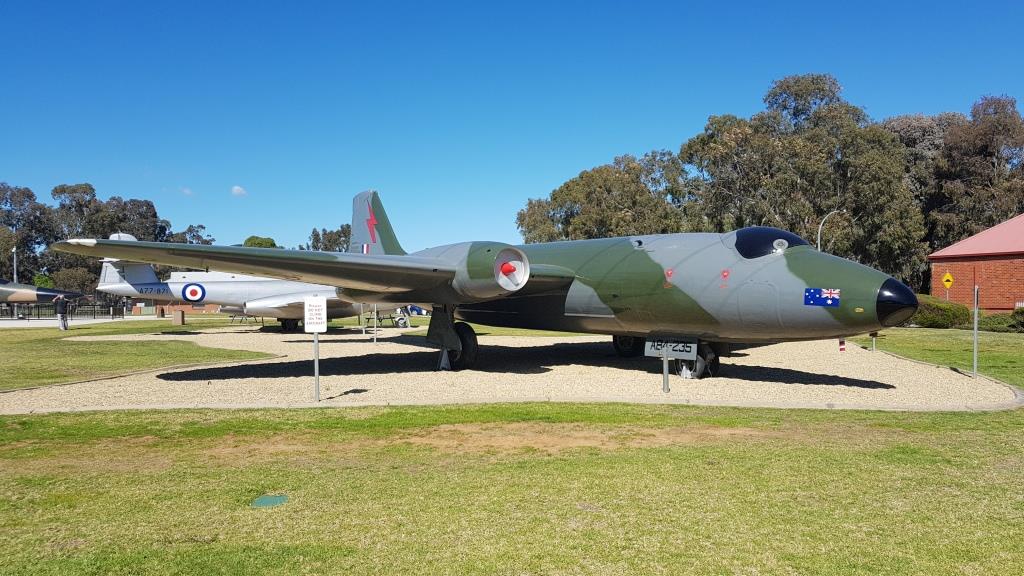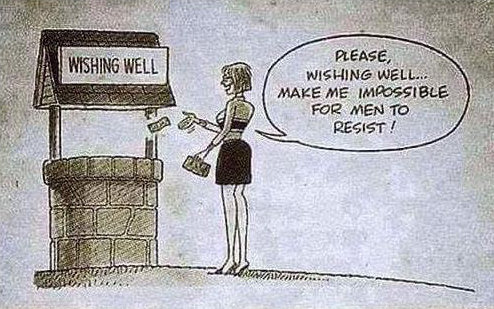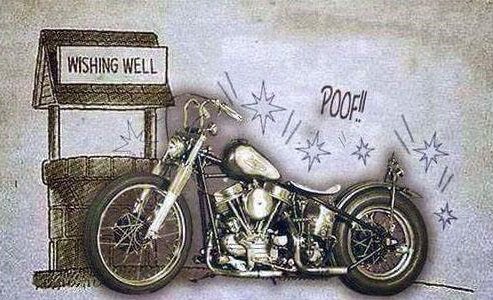|
|
||||||
|
||||||
|
Privacy Policy | Editorial Policy | Profit Policy | Join the Association | List of Members | Contact us | Index | Links |
||||||
|
Back Go to page: 1 2 3 4 5 6 7 8 9 10 11 12 13 14 15 16 17 18 19 20 Forward
|
||||||
|
|
||||||
|
Kapooka Army Camp.
Back in September, Geoff Spackman and I were fortunate enough to be given a tour of the Kapooka Army Camp.
We must thank the Camp’s Commandant, Colonel (Group Captain in the real money) Mick Garraway for arranging everything for us, he made us feel most welcome.
(This story contains several HD photos, please allow a few seconds for the page to load)
|
||||||
|
|
||||||
|
L-R: Geoff Spackman, Colonel Mick Garraway, Trev Benneworth.
|
||||||
|
Mick Garraway was born in western Victoria and raised in the Riverina district of New South Wales. He entered the Royal Military College in 1992, and graduated in 1993 into the Royal Australian Infantry Corps. His initial appointment was as a Platoon Commander in the 5th/7th Battalion of The Royal Australian Regiment, where he served as a platoon commander for three years.
He served as a company second in command and Training Development Officer at the Army Recruit Training Centre, as Adjutant and Operations Officer at the 1st/19th Battalion of The Royal New South Wales Regiment, and as the Current Operations Captain on Headquarters 1 Brigade. He served on exchange with the British Army in 2002 and 2003, with the 1st Battalion Irish Guards in Muenster, Germany. During this period, he deployed with the company to Iraq on Op TELIC, participating in the invasion of Iraq and the battle for the city of Ba.
Colonel Garraway returned to Australia in January 2004 and took command of B Company 5 Battalion for two years, which included operational service in southern Iraq with the Al Muthanna Task Group on Op CATALYST from April to November 2005. In 2006 he served as the Operations Officer of 5th/7th Battalion. He attended the Australian Command and Staff College in 2007, and upon graduation, served as Military Assistant to the Deputy Chief of Army. Upon promotion to Lieutenant Colonel, he served as the Career Advisor for PSC Majors and SSO Lieutenant Colonels. He assumed his appointment as Commanding Officer of 7th Battalion in December 2009.
Colonel Garraway and his wife Leanne have two sons. His main sporting interest is Rugby, which he played and coached at various levels.
On 26 January 2013, he was made Member of the Order of Australia for exceptional service in the field of officer career management in 2009 and as Commanding Officer, 7th Battalion, the Royal Australian Regiment, from 2010 to 2012.
|
||||||
|
Click the Video below to see an ABC interview with Mick Garraway.
|
||||||
|
|
||||||
|
||||||
|
The 5000 acre Kapooka Army Camp, which is situated on the Olympic Way, a few kilometres south west of Wagga, was established in 1942. |
||||||
|
|
||||||
|
It was initially set up during World War 2 as the training base for Engineers, combining the scattered training units which at that time existed in Echuca (Vic), Cowra (NSW), Goondiwindi (Qld) and included the Reinforcement Training Battalion which had recently returned from the Middle East. It is thought the site was selected as it was close to the home town (Wagga) of the then Commander in Chief, General Thomas Blamey, after whom the Camp was named.
Other factors which influenced the selection of the site included it being about halfway between Melbourne and Sydney, close to a major rail line, easily accessible by road being close to the Sturt Highway (Adelaide to Sydney), Hume Highway (Sydney to Melbourne) and close to the existing RAAF Bases at Uranquinty, Wagga and Temora.
The site chosen was a property called Moorong consisting of 2500 acres of undulating loamy red soil and about 2400 acres of hilly grazing land with another 350 acres of river flats adjacent to the Murrumbidgee River. The Government rented the site initially but compulsorily acquired it in 1946.
In 1942, with the expected influx of about 3,700 trainees, the Army began construction of a Headquarters building and tented accommodation for the troops as well as solid buildings to house admin facilities, officers’ sergeants’ and soldiers’ messes, stores, latrines and ablutions, laundries and lecture rooms. By December of 1942, seven camp sites had been established, consisting of a HQ building, camp hospital, rows of tents with some low wooden buildings and a few temporary huts. Early on, the accommodation was very basic, some of the tents were Canadian with wooden floors while trainees housed in others weren’t so lucky, relying on groundsheets to keep the dirt at bay.
Bedding consisted of straw filled palliasses which weren’t too bad provided you didn’t suffer from hay fever. Anyone who has been to Wagga knows the winters can be miserable and trainees back then were issued with only two thin blankets so most wore their socks and great-coats to bed. Summers were completely different. It was very hot and dusty and the blowflies were a menace and most rolled the sides of their tents up to allow in fresh air.
As well as a training camp for Army Engineers, it was decided to move the Anti-Aircraft Searchlight training wing which included numerous ladies from the Australian Women’s Army Service, (AWAS) onto the camp. Other AWAS ladies were also employed as cooks, tailors, drivers and clerks freeing up the men for service overseas. The facilities were also used by engineers from the US Army. Almost a million US troops were based in Australia during the first years of the Pacific War and a large number of the US Marines who played an important part in that section of the war trained at Kapooka.
From 1942 until the end of the war in 1945, a total of about 47,000 people passed through Kapooka. At its peak, it housed 9,000 men and women.
Every effort was made to keep the troops occupied in their free time and sporting activities such as cricket, baseball, basketball and all football codes were played and matches were organised against teams from the various RAAF Bases.
|
||||||
|
A government which robs Peter to pay Paul can always depend on the support of Paul.
|
||||||
|
Training was very hard. Policy was to make the men into soldiers first then engineers second. Many times they were driven 25klms or more from camp, saddled up with full kit and told to find their way back to camp in the quickest possible time while encountering gelignite mines and being “strafed” by RAAF aircraft.
Meals, although monotonous, were wholesome and adequate and were usually eaten in Mess huts which seated about 150 people. Trainees were issued with two metal dixies and an enamel mug which they washed themselves after each meal and returned them to their tents. Mutton, sometimes served up as stew, was on the menu nearly every day, accompanied by potatoes, pumpkin and gravy. Breakfasts were a little different with porridge being provided as an option to the regularly offered up mutton.
The small local cafes in Wagga provided a popular respite from Camp food, with fish and chips or the Ozzie favourite, mixed grill, being the favourites.
When the Japanese surrendered on the 15th August, 1945, celebrations raged right throughout Australia. With large Army and Air Force populations, it was no different in Wagga. Army personnel marched through the street urged on by thousands of the populous and gathered at the Wagga Memorial Gardens where the Air Force provided a spectacular display with their Spitfires and Beaufighters.
With the War over, demobbing started and the use of Kapooka and other training camps at Bathurst and Cowra were to be disposed of, being declared “surplus to requirements”. By February 1947, most of the troops had left Kapooka and a large portion of the Army’s building materials was released to the Wagga populous where war shortages had left the town in short supply. By the end of October 1948, most of the Army’s motor vehicles, earth-moving equipment, machinery, clothing, buildings, furniture and timber stores had been auctioned off.
During the war, many Italian POW’s had been held in the area, most of whom had been working on farms in the Wagga area. When the war ended, they were freed from forced labour but as there was a shortage of ships, most of which were transporting Australian military personnel and equipment back to Australia, they were not able to be repatriated. The bulk of them were moved down to Liverpool near Sydney but a lot decided to remain in the Wagga area.
With Europe in turmoil with thousands of displaced peoples, the Chifley
Labor Government decided to ramp up its immigration program as labourers
were desperately needed to satisfy the huge demand for houses and other
goods and services after the war. The Government looked to the displaced
persons’ camps in Europe. Initially only single men and women were accepted
but by mid 1948 it was decided to allow family groups to
Late in 1951, with the Korean war on the go, National Service was introduced, the migrant centre was closed down and the Department of Defence re-acquired the Kapooka Army Camp as a training area for its recruits. All fit males aged 18 had to register for 176 days service followed by 2 years in the CMF.
On the 2nd November 1951, 140 raw recruits marched into Kapooka Army Camp to begin their training and by the end of the month there were 800 young blokes learning the drill.
The troops lived in the Nissan Huts, which were divided into 6 rooms, with 2 recruits to a room. As all were painted silver, they were referred to as Silver City. (The RAAF referred to theirs as Tin City).
That Nasho scheme finished in 1959.
In 1957, as different from most other buildings on the camp, a brick, timber and glass canteen building was built at a cost back then of £80,000 ($160,000) – about $1.5M in today’s dollars. It was named the Edmondson Club after VC winner, Corporal John Edmondson. It is still in use today. |
||||||
|
|
||||||
|
||||||
|
Although the Australian Women’s Army Service (AWAS) was demobilised by June 1947, a new organisation known initially as the Women’s Australian Army Corps, and later renamed the Women’s Royal Australian Army Corps (WRAAC) was formed in April 1951. There was a shortage of man power in the Army during the Korean War and the women were required to fill the gaps left with the men overseas. They were employed as cooks, drivers, stewardesses, clerks, librarians, switchboard operators and typists.
By April 1953, twenty-one of these ladies were stationed at Kapooka including a number of girls in the Nursing Corps. Their quarters were located near the Camp hospital, with three and sometimes four to a room and although segregated from the men there was a rec room in which dances and get togethers were often held. They ate in their own Mess. |
||||||
|
|
||||||
|
Ladies’ living quarters, early 1960’s. |
||||||
|
Laws back then were a lot different to what they are today and it was forbidden for the girls to date recruits or young officers, however, where there’s a will, there is always a way. The Camp ambulance was usually left unlocked and was a favourite “meeting place” for some extra-curricular activities – similar to the RAAF’s practice of showing young ladies the “Golden Rivet” in one of its transport aircraft. This worked well until one occasion when the ambos received a late night call out and arrived at their vehicle only to find it occupied. After getting dressed, the canoodlers were left with a long walk home. The ambulance was kept locked after that.
Despite these rules and regs, a lot of the girls found their future husbands at the Camp – Mother nature will not be denied!
Kapooka became the Army’s recruit training camp (1RTB) for National Servicemen and Regular Soldiers and was organised along the lines of an infantry battalion. Each recruit was assigned to a Company, named using the phonetic alphabetic – Alpha, Bravo, Charlie, Delta etc. The DI’s were usually ex WW2 or Korean vets. The Wagga community welcomed the re-introduction of the Army onto Kapooka and a close and cordial relationship developed between the community and the ADF units at Kapooka and Forest Hill.
Soldiers helped fight various bush fires which were always a threat in the area and during the winter months helped Wagga Residents stranded during the perennial Murrumbidgee floods. |
||||||
|
||||||
|
In 1952, the use of a former Church of England hall in one of Wagga’s main streets was donated by the Archdeacon to be used as a recreation centre (the Klub Kapooka) for soldiers on leave from Kapooka. The soldiers were granted the premises for 18 months, free of rent, and got together and renovated the place into a very comfortable and very popular R&C centre.
|
||||||
|
|
||||||
|
Klub Kapooka. |
||||||
|
In 1962, to emphasise the close ties between the City of Wagga and the Army at Kapooka, the Wagga City council granted the Kapooka Military Area the freedom of the City – the highest compliment a civil organisation can offer a military unit. The ceremony was held in Bolton Park not far from the Wagga Railway Station. The park is easily identifiable today as it has a RAAF Vampire on a pole at its southern edge. |
||||||
|
|
||||||
|
Prior to the ceremony taking place, both the men and the women from Kapooka paraded and demonstrated precision drill on the Park, as only the Army can do, following which they marched down Wagga’s main streets exercising their Freedom of the City.
Kapooka was now well and truelly established as the Army’s recruit training centre.
In 1964, with the Indonesian Confrontation underway and Vietnam War about to break out, the ADF entered into an extensive recruiting campaign. National Service was re-introduced on the 10 November 1964 to strengthen the Army’s regular units. Men aged 20 were selected by birthday ballot to undergo 3 months training at Kapooka, 3 months Corps training and 18 months with a regular Army Unit. The first conscripts entered Kapooka on the 1st July 1965.
To house, feed and socialise these additional men, an extensive building program got underway at the Camp. Until then, Kapooka consisted of between 400 and 500 “temporary” WW2 huts and these were demolished or sold and replaced by more modern barracks, messes, kitchens, stores and training and recreation centres to cater for the expected 4000 – 7000 recruits. In addition, additional married quarters were needed to cater for the extra staff required to train the recruits.
Work commenced in 1964 and the sum of £2,067,000 (about $59M today) was set aside by the Parliamentary Public Works Committee to complete the works. By March 1965 two of the 3 story barrack blocks for staff and recruits were finished along with a Mess Hall, HQ Store and Administration Block. Work also commenced for a modern gymnasium and heated swimming pool.
In 1966, the Camp was officially named Blamey Barracks in honour of the only Australian to be given the rank of Field Marshall. The Minister for the Army at the time, Malcolm Fraser unveiled the plaque naming the new Barracks.
|
||||||
|
|
||||||
|
Modern living quarters with wash rooms in the centre.
|
||||||
|
||||||
|
|
||||||
|
Recruits room. Normally 4 men or 4 women share a room which has a central divider but each room is able to accommodate up to 6 persons if and when required. Rooms are heated in the winter by an oil filled radiator. Men and women live in the same block, with the women using the first rooms in from the entrance. The beds with the brown blanket are not in use.
|
||||||
|
|
||||||
|
Recruits have their own secure locker, though when the top bunk is used we don’t know where he/she stores his/her clothes. Two small desks, one to each side of the divider, are also provided. As is the norm at all ADF recruit bases, everything was immaculate and spotless.
Showers and toilet facilities are situated at the far end of each building and with mixed accommodation, we imagine there would be some interesting times indeed.
|
||||||
|
||||||
|
|
||||||
|
All but one of the old Nissan huts were sold off and a lot can be found scattered around the Wagga farming district. The last remaining Nissan hut is now the Kapooka Museum and sits opposite the Edmondson Soldiers’ Club.
|
||||||
|
|
||||||
|
|
||||||
|
|
||||||
|
Part of the interior of the Museum.
|
||||||
|
By the end of 1966, a total of 8 living quarter blocks had been built, each floor of each block could accommodate up to 48 recruits.
Like all ‘Rookies’ courses, life at Kapooka isn’t a bed of roses. Recruits have to rise and shine early in the morning, between 0530 and 0600, then before breakfast, they have to complete the 3 S’s, panic their rooms, make their beds, strip their F88 Stey rifles and lay them out for inspection. The contents of their lockers have to be right-dressed and too bad if the inspecting NCO finds anything not up to scratch, if so beds are ripped apart, locker contents are tossed out and the poor recruit has to start all over again and get things ship-shape before he/she can head off for breakfast which starts at 0630. After breakfast, training starts at 0720 of which a whopping 50% of the time is spent drilling and learning to strip, clean and fire their weapons. The other 50% is spent on PE, education, first aid, field craft and learning military law.
|
||||||
|
|
||||||
|
Some of the modern Lecture Rooms.
|
||||||
|
|
||||||
|
Soldiers honing their skills on the Camp’s main parade ground.
|
||||||
|
||||||
|
|
||||||
|
Route marches are often sprung on the recruits, these involve a several kilometre walk, carrying their rifle and a full pack consisting of a full water bottle and a bum pack which carried a dead weight. These are usually followed by more physical testing exercises such as stretcher carrying a ‘supposed’ wounded soldier across rough ground, completing obstacle courses or crossing a dam, usually in freezing water.
In today’s Army, women are treated the same as the men. Following the cultural changes that swept throughout Australia in the late 1970’s, female soldiers began to be integrated into the Army and were expected to complete the same 12 week rookies’ course as the men. The first all-female course began in January 1985 when 48 women arrived at Kapooka, 3 months later 33 of them passed out as regular soldiers.
By 1998, 20% of all recruits entering Kapooka were women.
We had a look over some of the obstacle courses that these fit young women have to conquer along with the men, most of which are daunting and we don’t envy them one bit.
|
||||||
|
|
||||||
|
|
||||||
|
||||||
|
|
||||||
|
|
||||||
|
|
||||||
|
|
||||||
|
|
||||||
|
And when not out in the elements torturing themselves on these obstacle course, recruits are put through their paces in the very well-equipped base gym. In 3 months, young Australians are transformed from mainly immature gangling young people into fit young individuals, full of self-confidence, resilience, courage, determination and able to act as and rely on each other as a team.
|
||||||
|
|
||||||
|
|
||||||
|
|
||||||
|
The open firing ranges in the distance – a long walk from the living quarters.
|
||||||
|
|
||||||
|
|
||||||
|
Before being let loose on the open ranges, recruits are now taught weapons training in the indoor electronic Weapons Training Simulation System. Open ranges are now electronic, people no longer man the butts, instead hits are electronically recorded and notified back to the firing point. Recruits use the open air range in all weathers.
One big change that has been introduced into the Army is the quality of food provided for its men and women. Years ago, Army people would look forward to visiting a RAAF Base just to get a good meal. Not any more, Army catering has had a complete revamp and although the food is now prepared, cooked and served by civilian contractors, both the quantity and quality are excellent.
|
||||||
|
||||||
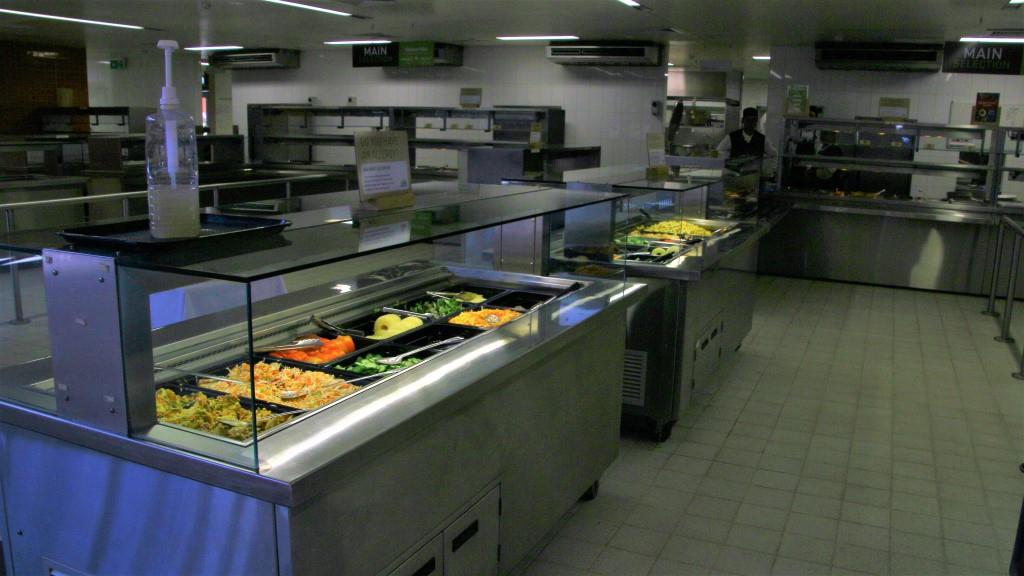 |
||||||
|
|
||||||
|
|
||||||
|
Geoff and I were invited to lunch in the recruits Mess and the meal we enjoyed could not be faulted.
|
||||||
|
Although recruits today are usually better educated than their counterparts were some years earlier, with learning now mostly computer based and equipment vastly more hi-tech, training at Kapooka has not changed all that much since the 1960’s. They still learn the same basic skills, they are constantly assessed on their attitude, their energy, effort, motivation and respect for rank, drill and discipline. They still grizzle and groan about it all, but deep down those that stick with it - love it.
Females no longer have a subsidiary role in today’s Army and are no longer segregated from the men. The first female recruits were trained separately from their male counterparts, but since 2006, training platoons are now mixed gender. Today men and women train together, live together, socialise together and when required, fight together.
Troops leave Kapooka as proud and professionally trained soldiers, combat ready and technologically advanced. They are prepared to survive in a variety of different threat environments, in urban, close and open terrain, by day and by night and against a variety of conventional and unconventional threats including nuclear, biological, chemical and IED explosive weapons. |
||||||
|
||||||
|
|
||||||
|
I joined a health club last year, spent about 250 bucks. Haven't lost a kilo. Apparently you have to go there!
|
||||||
|
The Kapooka Tragedy 1945.
On the 21st May, 1945, just months prior to the end of World War II, a tragic accident occurred at the Engineers Training Base, Kapooka. While being shown demolition and explosive procedures, an enormous explosion occurred in a dugout, killing 26 personnel. On that day, two instructors were showing young conscript sappers the correct use of explosives. They were located in a dugout, where men usually waited while an explosion occurred above ground. Two men who were just outside survived. The sound of the explosion could be heard in Wagga, more than 10 kms away.
This event remains to this date as the Australian Army’s largest loss of life in a training accident, and our nation’s largest mass military funeral on Australian soil.
(Click the pic at right to read the inscription)
|
||||||
|
|
||||||
|
|
||||||
|
Ubique is Latin for “Everywhere” and is the motto for the Royal Australian Army Engineers.
|
||||||
|
The accident occurred at approximately 2.45pm, as the Sappers were seated in an underground bunker on a demolition range, receiving instruction in the preparation of hand charges. The exact cause of the explosion is still unknown; however 24 men were killed instantly with two dying in hospital some two hours later. Incredibly one man, Sapper Allan Bartlett, survived the explosion, he was profoundly deafened and badly injured and was found imbedded in the clay wall of the bunker. It was his birthday.
Two days after the tragedy the 26 dead were buried at the Wagga Wagga war cemetery. An estimated crowd of 7,000 people attended the funeral which brought the town of Wagga Wagga to a standstill with a procession of Army vehicles, dignitaries and mourners taking some 45 minutes to pass.
|
||||||
|
|
||||||
|
Although at this time the grief of the tragedy was felt across the nation, it was largely forgotten over the years (other than by those in the local community whom it had greatly affected). In recent years an annual memorial service has been held on the 21st of May, at the site, to remember this tragedy. The service brings together those from the local community and the relatives of those killed from interstate who still remember that tragic day. The memorial site has been developed into a permanent community area with future plans for improvements to tell the story, so Australia never forgets.
Until recently the site was marked by an inconspicuous plaque. The actual site of the bunker now lies on private land just across from the new memorial and a change in boundary fencing means the memorial site is open to the community - previously it had been within the lines of the Kapooka Military Area.
The concrete block, now on private land, is where the tragedy occurred.
Surprisingly by today’s standards, death certificates were issued for the dead men later on the same day of the accident. From the 23rd May until the 1st June a military inquiry was held on site, only a few witnesses were interviewed, however outside of the army, strict censorship occurred. In the Wagga Daily Advertiser of 22nd May, a small front page story said “Shocking Tragedy”. No names were released. There was an enlarged story on 23rd May, but no names again. Some names were printed on 24th the day of the funeral. Even allowing for the limited information that had been released, the turn - out for the funeral was amazing. The coffins were carried on the back of four army trucks. Another truck was reserved for wreaths and tributes.
After the war ended, nothing was publicly said about the tragedy for decades. No doubt the families never forgot, but at other WWII ceremonies in Wagga nothing was publicly remembered, probably until 1992. In that year, the 50th anniversary of the opening of Kapooka was being celebrated and many officials were coming to town. The army arranged for a plaque to be placed on a concrete block, in private property near the explosion site. There were some family members of the deceased at the ceremony and more than one newspaper article.
Later, in 1995, another ceremony was held marking the 50th anniversary of the accident. A local committee called, “Australia Remembers” was involved, together with Historic Society members, attended a moving ceremony at Kapooka. Many family members plus at least one survivor gave their thoughts on the tragedy for the press. Then in 2000 an information board on the accident was unveiled at the War Cemetery. More recently, the plaque which had been located on the concrete slab in the farm paddock, was relocated across the road to a spot where the public could view it without entering the private land.
|
||||||
|
|
||||||
|
|
||||||
|
In 2012, the army has built a commemorative enclosure across the road from the actual site, allowing for car parking and with interpretive boards to be erected. A tree has been planted for each soldier killed, and there is a name plaque in front of each tree. The army has plans for a walking trail from the base to the site, which is about 400 metres.
Another action required is for the City’s tourist brochures to mention the event and the memorials.
|
||||||
|
|
||||||
|
RAAF Wagga.
When driving from Canberra to Kapooka, you have to pass by the front entrance to RAAF Wagga. For many years there has been a bunch of aircraft outside the front gate, but recently they have all been tarted up and an F-111 added to the line-up. It is now a “compulsory” stop for passers by. |
||||||
|
|
||||||
|
|
||||||
|
|
||||||
|
|
||||||
|
|
||||||
|
|
||||||
|
|
||||||
|
|
||||||
|
Uranquinty.
While at Kapooka, we decided to have a look over the old RAAF Base at Uranquinty which was only a short 5 minute drive further down the Olympic Way from the turn into Kapooka.
|
||||||
|
|
||||||
|
We found the Uranquinty Pub easily enough opposite which is a memorial park which contains a number of boards depicting the activities that occurred at the base all those years ago, but try as we might, we could not find the old Base – it has long gone and been returned to nature.
|
||||||
|
|
||||||
|
|
||||||
|
||||||
|
|
||||||
|
|
||||||
|
|
||||||

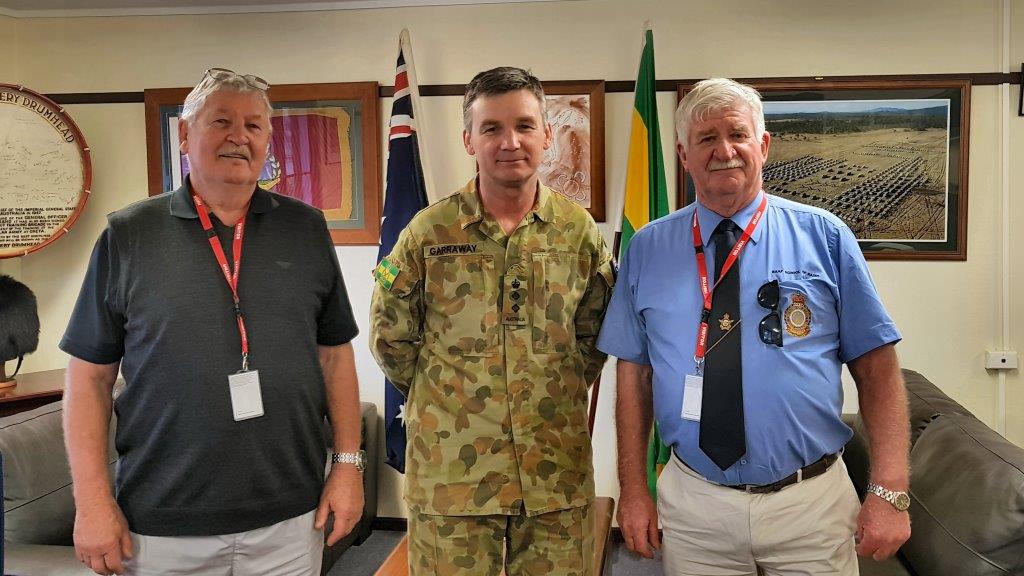
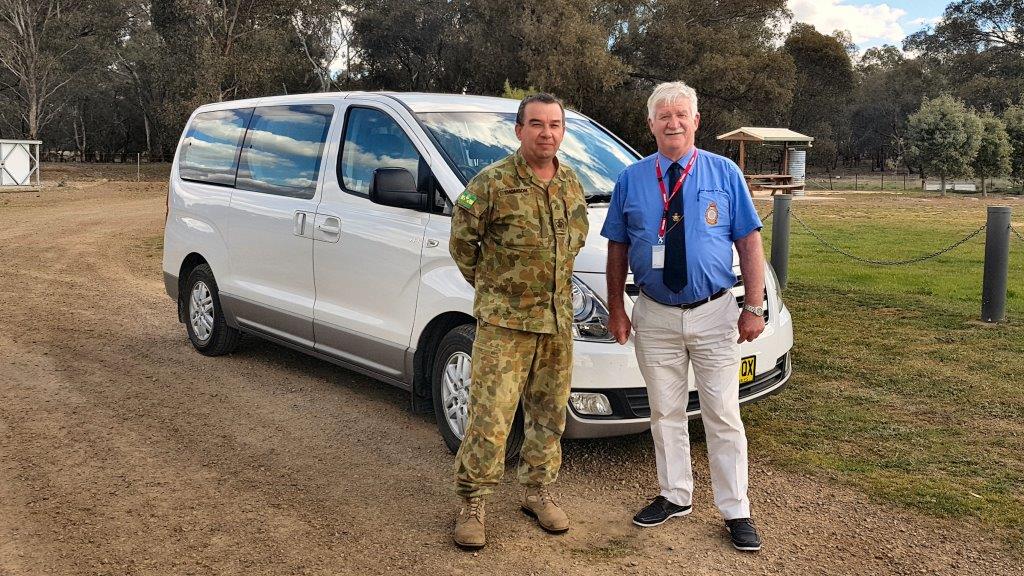
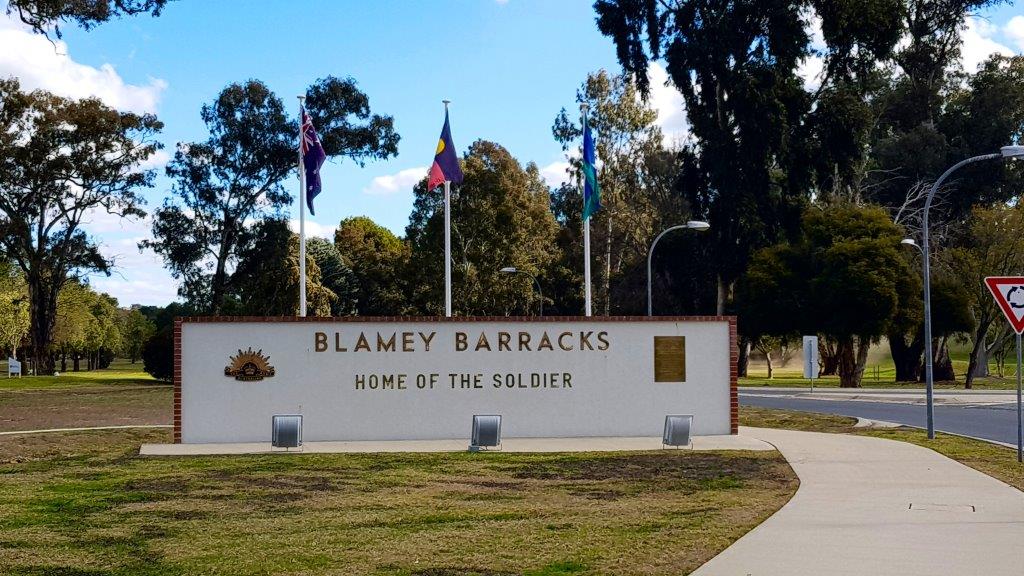
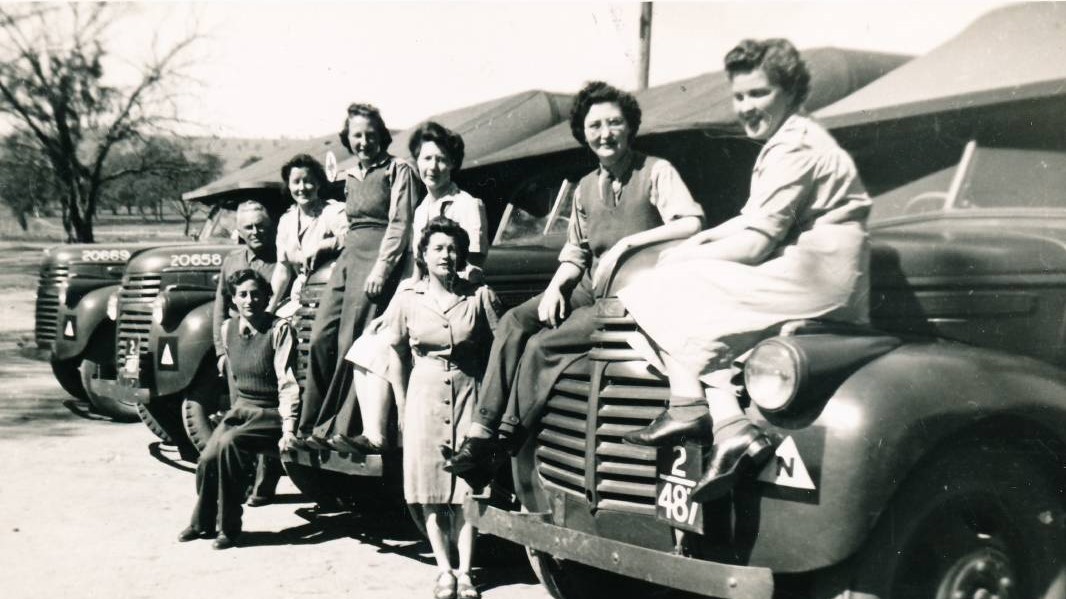
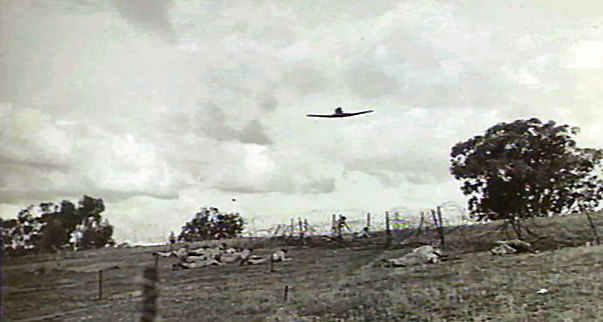
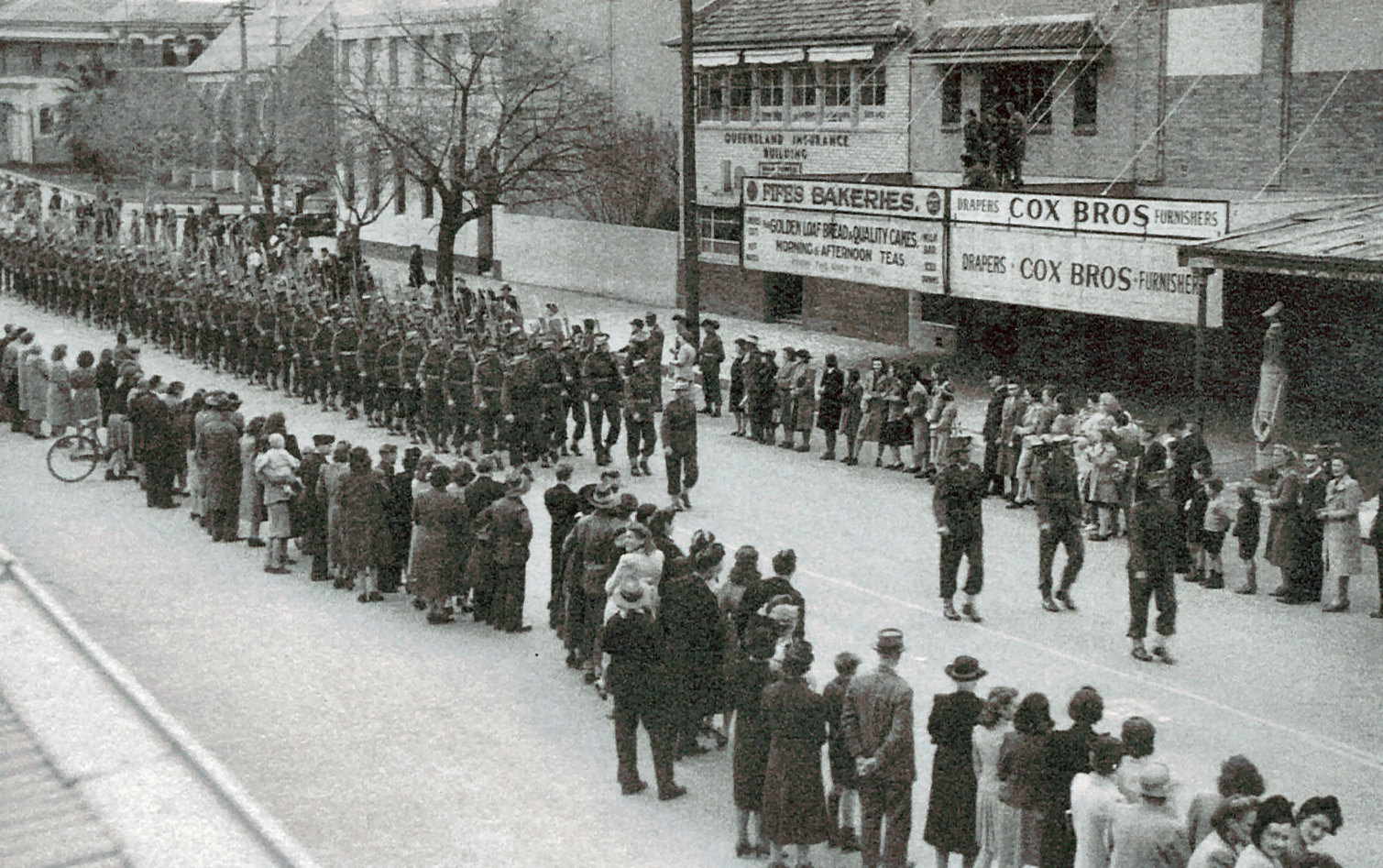
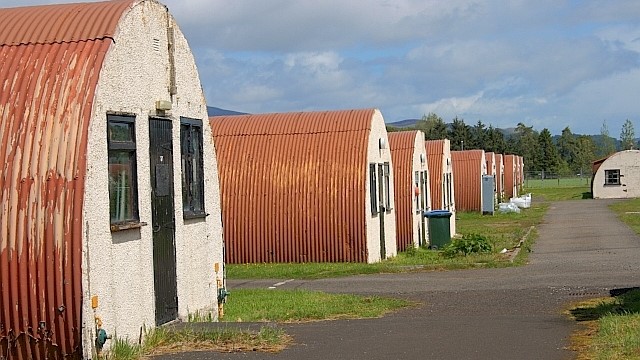 immigrate. This, in itself, posed a problem, as housing was required to
accommodate the families while the men were at work. Initially the
facilities at Uranquinty were used but soon after, families were also housed
at the disused Army Camp at Kapooka and by the end of 1951, despite lengthy
industrial disputes, Kapooka housed a total of 300 immigrants. Most were
housed in the familiar to most of us - Nissan Huts, of which 88 had been
built.
immigrate. This, in itself, posed a problem, as housing was required to
accommodate the families while the men were at work. Initially the
facilities at Uranquinty were used but soon after, families were also housed
at the disused Army Camp at Kapooka and by the end of 1951, despite lengthy
industrial disputes, Kapooka housed a total of 300 immigrants. Most were
housed in the familiar to most of us - Nissan Huts, of which 88 had been
built.